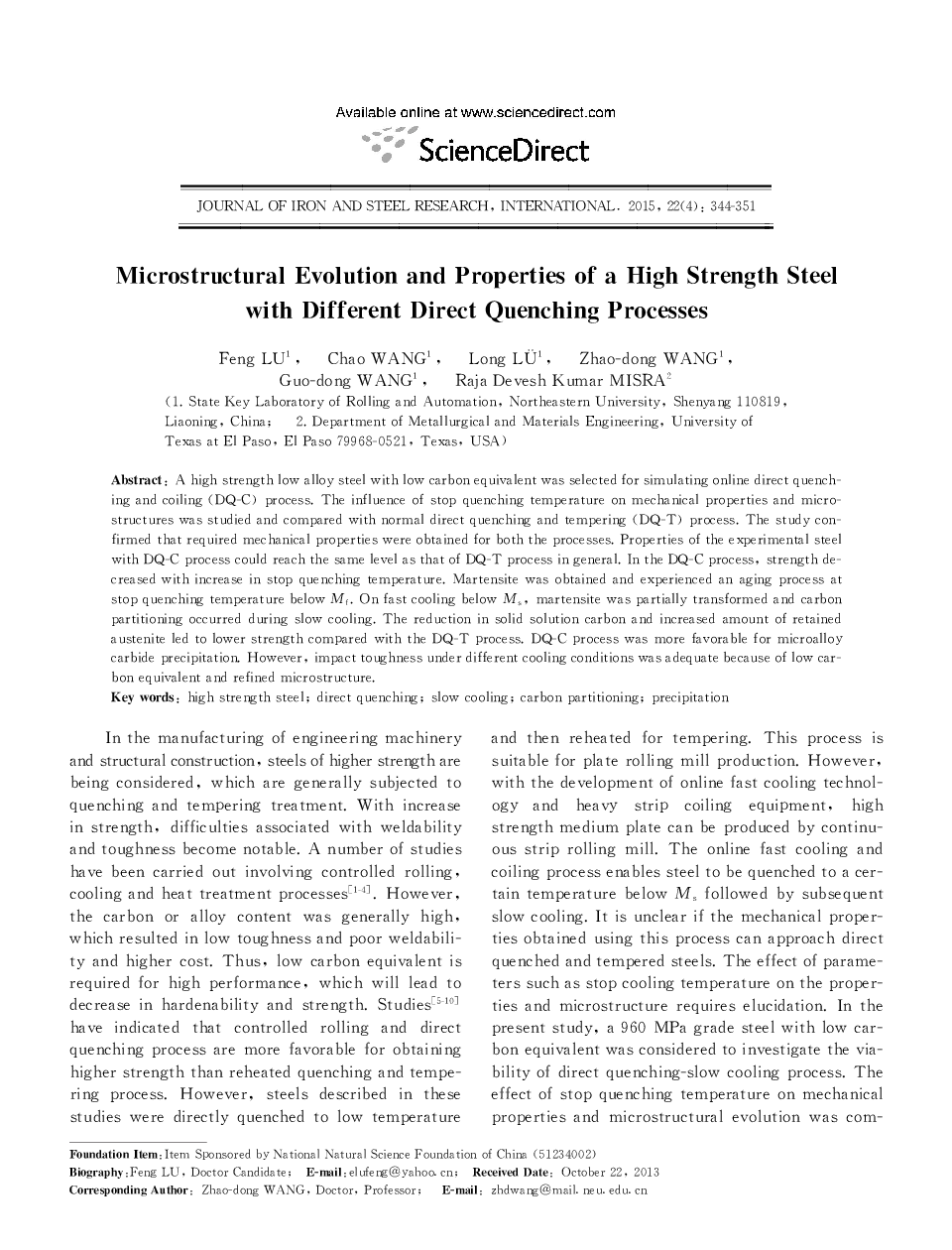| Article ID | Journal | Published Year | Pages | File Type |
|---|---|---|---|---|
| 1628584 | Journal of Iron and Steel Research, International | 2015 | 8 Pages |
A high strength low alloy steel with low carbon equivalent was selected for simulating online direct quenching and coiling (DQ-C) process. The influence of stop quenching temperature on mechanical properties and microstructures was studied and compared with normal direct quenching and tempering (DQ-T) process. The study confirmed that required mechanical properties were obtained for both the processes. Properties of the experimental steel with DQ-C process could reach the same level as that of DQ-T process in general. In the DQ-C process, strength decreased with increase in stop quenching temperature. Martensite was obtained and experienced an aging process at stop quenching temperature below Mf. On fast cooling below Ms, martensite was partially transformed and carbon partitioning occurred during slow cooling. The reduction in solid solution carbon and increased amount of retained austenite led to lower strength compared with the DQ-T process. DQ-C process was more favorable for microalloy carbide precipitation. However, impact toughness under different cooling conditions was adequate because of low carbon equivalent and refined microstructure.
